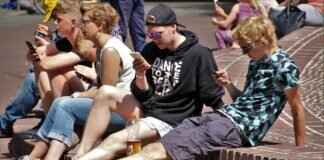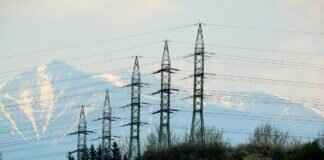This article delves into the increasing visibility and acceptance of nude male models across various industries. It examines the cultural, artistic, and social factors contributing to this notable trend. As society evolves, the representation of male bodies in the nude is becoming more prevalent and accepted, reflecting broader changes in attitudes towards masculinity and body image.
The Cultural Shift Toward Body Positivity
The rise of body positivity movements is fundamentally reshaping perceptions of masculinity and body image. This movement advocates for the acceptance of all body types, promoting self-love, confidence, and a celebration of diversity. As traditional beauty standards are challenged, the male form is increasingly recognized for its variety and uniqueness.
- Understanding Body Positivity: Body positivity encourages individuals to appreciate their bodies, regardless of societal expectations. This shift has significantly influenced how male models are perceived in the fashion and art worlds, allowing a broader range of body types to be celebrated.
- The Role of Social Media: Platforms like Instagram and Twitter have amplified body positivity messages, providing a space for male models to share their experiences. This visibility fosters acceptance and inspires more men to embrace their bodies, contributing to the normalization of nude male modeling.
The Influence of Art and Fashion
Art and fashion have long utilized the human form as a canvas, and the inclusion of nude male models reflects changing artistic expressions and societal norms regarding masculinity. Historically, male nudes have been celebrated in art, from classical sculptures to contemporary photography, establishing a rich tradition that continues to influence modern representations of the male body.
- Historical Context of Male Nudes in Art: The portrayal of male nudes has been a significant aspect of artistic expression throughout history. Artists have used the male form to explore themes of strength, vulnerability, and beauty, which continues to resonate in today’s artistic landscape.
- Fashion Industry’s Evolution: The fashion industry is evolving to embrace more diverse representations of masculinity. Campaigns featuring nude male models challenge conventional norms and celebrate individuality, pushing boundaries and redefining what it means to be masculine.
The Psychological Impact of Nude Modeling
Nude modeling can have profound psychological effects on both the models and the audience. For male models, participating in nude shoots can enhance self-esteem and body confidence. Embracing vulnerability in front of the camera often leads to personal growth and acceptance.
- Benefits for Male Models: Engaging in nude modeling can be a transformative experience, helping models to confront and overcome insecurities related to body image. This process fosters a sense of empowerment and authenticity.
- Audience Reception and Interpretation: The audience’s reception of nude male models varies, with many experiencing a shift in perception regarding masculinity, beauty, and vulnerability. This engagement often fosters deeper connections with art, encouraging viewers to question their own biases and assumptions.
Breaking Down Gender Stereotypes
Nude male modeling plays a significant role in challenging and redefining gender stereotypes. By showcasing diverse male bodies, the industry encourages a reexamination of rigid gender norms, fostering a culture where emotional expression and physical diversity are celebrated.
- Redefining Masculinity: The portrayal of nude male models often challenges traditional notions of masculinity, presenting a more nuanced view that embraces vulnerability, strength, and diversity in male identities.
- The Impact on Gender Norms: As more diverse male bodies are showcased, society is prompted to reconsider outdated gender norms, leading to a more inclusive understanding of masculinity that values emotional expression alongside physicality.
The Role of Technology in Nude Modeling
Advancements in technology have transformed the nude modeling landscape, enabling new forms of expression and accessibility for both models and artists. Online platforms have democratized the art of nude modeling, allowing aspiring models to showcase their work and connect with broader audiences.
- Digital Platforms and Accessibility: The rise of social media and digital art platforms has made it easier for male models to gain visibility. This increased accessibility is crucial for fostering acceptance and representation in the industry.
- Virtual Reality and Augmented Experiences: Emerging technologies like virtual reality are creating immersive experiences that challenge traditional boundaries of art and modeling. These innovations offer innovative ways to engage with the human form, expanding the possibilities for artistic expression.
The Future of Nude Male Modeling
As societal norms continue to evolve, the future of nude male modeling looks promising, with potential for further inclusivity and artistic exploration. New trends in body representation, such as gender fluidity and non-binary identities, are likely to influence the future of nude male modeling, broadening the scope of what is considered beautiful.
- Emerging Trends and Influences: The ongoing dialogue surrounding body positivity and gender representation will likely lead to increased acceptance of diverse male bodies in various artistic and commercial contexts.
- Continued Acceptance and Representation: As the conversation around body image and masculinity progresses, the representation of nude male models will continue to evolve, reflecting a more inclusive and diverse understanding of beauty.
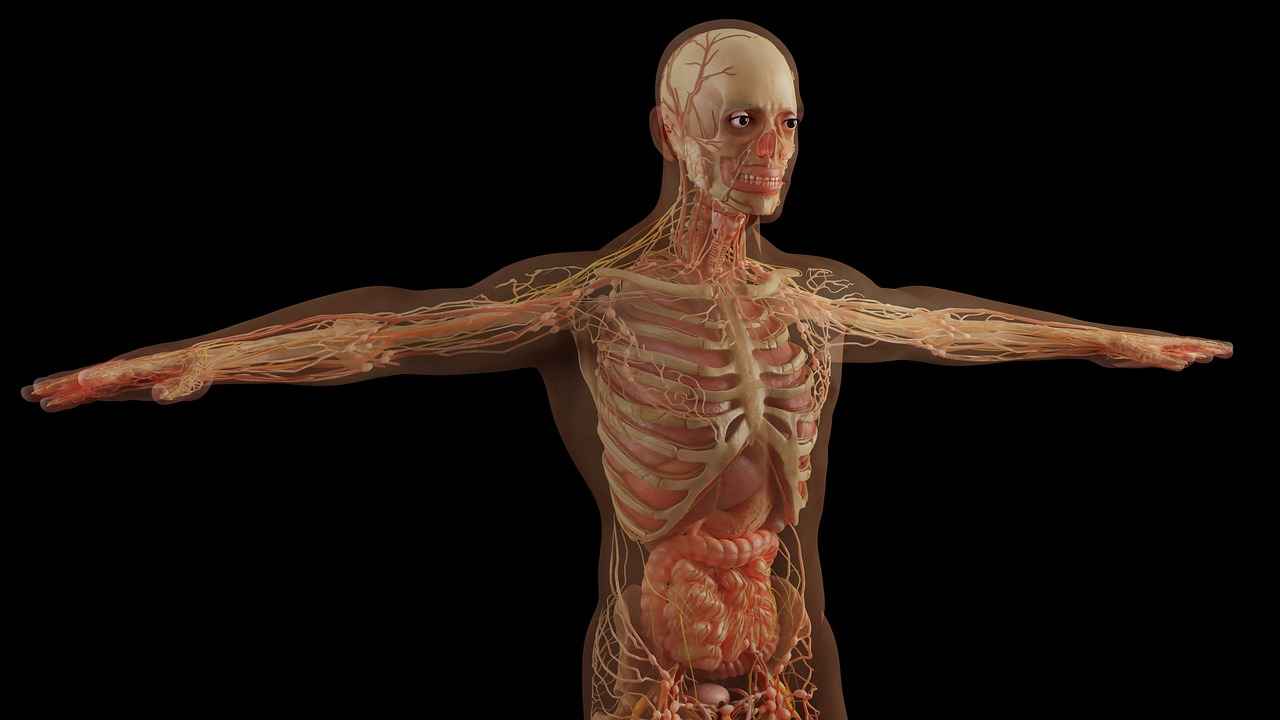
The Cultural Shift Toward Body Positivity
The cultural landscape surrounding body image and masculinity is undergoing a significant transformation, largely driven by the body positivity movement. This movement advocates for the acceptance of all body types, challenging traditional beauty standards that have long dominated societal perceptions of masculinity. As a result, we are witnessing a growing celebration of diverse male forms, which is reshaping how men perceive themselves and how they are viewed by others.
Body positivity movements are fundamentally altering the narrative around masculinity and body image. Historically, societal expectations have imposed narrow definitions of what constitutes an “ideal” male body, often glorifying muscular physiques while marginalizing those who do not conform to this standard. However, the body positivity movement is actively challenging these norms by promoting a more inclusive understanding of male bodies.
At its core, body positivity encourages men to embrace their unique physical attributes, fostering a sense of self-acceptance and confidence. This shift is particularly important in a world where media representations often perpetuate unrealistic standards. By advocating for the acceptance of all body types, the movement empowers men to reject the harmful stereotypes that have long dictated how they should look and behave.
Furthermore, the celebration of diverse male forms is making waves in various industries, including fashion and art. Male models of varying body shapes, sizes, and ethnicities are increasingly being featured in campaigns and exhibitions, reflecting a broader societal shift towards inclusivity. This visibility not only challenges traditional beauty standards but also encourages men to appreciate their bodies in all their forms.
Social media plays a pivotal role in this cultural shift. Platforms like Instagram and TikTok have become powerful tools for body positivity advocates, allowing them to share their stories and experiences. Male influencers and models are using these platforms to promote messages of self-love and acceptance, reaching audiences far beyond traditional media outlets. This grassroots movement is fostering a community where men can connect, share their journeys, and support one another in embracing their bodies.
As more men engage with body positivity messages, there is a growing recognition of the psychological benefits associated with this movement. Embracing body diversity can lead to improved mental health, as men learn to appreciate their bodies rather than criticize them. This newfound acceptance is crucial in combating issues such as body dysmorphia and low self-esteem, which can have profound effects on a man’s overall well-being.
The impact of body positivity extends beyond individual self-perception; it is also reshaping societal norms regarding masculinity. The traditional notion of masculinity, often associated with stoicism and invulnerability, is being redefined to include emotional expression and vulnerability. This evolution allows men to explore a broader range of identities and experiences, ultimately contributing to a more nuanced understanding of what it means to be masculine in today’s world.
In conclusion, the cultural shift toward body positivity is significantly reshaping perceptions of masculinity and body image. By celebrating diverse male forms and challenging traditional beauty standards, this movement is fostering a more inclusive and accepting society. As awareness continues to grow, it is essential for men to embrace their bodies and support one another in this journey toward self-acceptance and empowerment.
Understanding Body Positivity
Body positivity is a transformative movement that seeks to redefine societal standards of beauty and encourage the acceptance of all body types. This initiative promotes self-love and confidence, urging individuals to embrace their unique physical forms rather than conforming to restrictive ideals. The body positivity movement has gained significant momentum over the past few years, influencing various sectors, including fashion, art, and media, and reshaping how we perceive male models in these industries.
Historically, the concept of beauty has been largely dictated by narrow definitions, often excluding a vast array of body shapes and sizes. The body positivity movement challenges these archaic norms by advocating for the recognition and appreciation of diversity in body types. This shift not only empowers individuals to love themselves but also fosters a broader cultural acceptance of different appearances. The movement encourages individuals to celebrate their bodies, regardless of societal pressures to fit a specific mold.
One of the pivotal aspects of body positivity is its emphasis on self-acceptance. This principle is particularly relevant in the context of male models, who have traditionally been expected to adhere to strict standards of masculinity and physical appearance. The movement encourages men to embrace their bodies, irrespective of societal expectations. This newfound acceptance has led to a more inclusive representation of masculinity in the fashion and art worlds, where male models of varying shapes, sizes, and appearances are increasingly celebrated.
Moreover, the rise of social media has played a crucial role in propelling the body positivity movement forward. Platforms like Instagram and TikTok allow individuals to share their personal stories and experiences related to body image, creating a sense of community and support. Male models, in particular, have utilized these platforms to showcase their journeys toward body acceptance, inspiring others to do the same. This visibility is essential in normalizing diverse body types and challenging the stereotypical portrayals of masculinity that have long dominated the industry.
In the realm of fashion, the body positivity movement has prompted brands to reconsider their marketing strategies. Many companies are now featuring male models who embody a range of body types, moving away from the conventional “ideal” physique. This change not only reflects a more realistic representation of the male population but also resonates with consumers who seek authenticity in the brands they support. As a result, the fashion industry is gradually evolving to embrace a more inclusive approach, celebrating individuality and uniqueness.
Furthermore, the influence of body positivity extends beyond the fashion industry. In the art world, nude male models are increasingly depicted in ways that challenge traditional representations of masculinity. Artists are exploring themes of vulnerability and strength, showcasing the male form in a manner that celebrates its diversity. This artistic expression not only enriches the dialogue around body image but also encourages viewers to engage with the male body in a more open and accepting manner.
Ultimately, the body positivity movement serves as a powerful reminder that beauty is not confined to a singular standard. By advocating for the acceptance of all body types, this movement fosters a culture of self-love and confidence, encouraging individuals to embrace their bodies and challenge societal norms. As the conversation around body image continues to evolve, it is essential to recognize and celebrate the diverse representations of masculinity that are emerging in both the fashion and art worlds. The journey toward acceptance is ongoing, but the progress made thus far highlights a significant cultural shift that is reshaping perceptions of beauty and body image for generations to come.
The Role of Social Media
In the digital age, social media has emerged as a powerful tool for change, particularly in the realm of body positivity and representation. Platforms like Instagram, TikTok, and Twitter have become vital spaces where individuals can share their personal stories and experiences, fostering a sense of community and acceptance. This phenomenon is especially significant for male models, who have historically faced rigid standards of masculinity and body image. The ability to connect with audiences on these platforms allows male models to not only share their journeys but also challenge societal norms surrounding body image.
Social media acts as a megaphone for body positivity messages, enabling male models to reach wider audiences than ever before. Through personal narratives and visual storytelling, these models can showcase their bodies in a way that emphasizes authenticity and self-acceptance. The use of hashtags such as #BodyPositivity and #MaleModels allows users to discover content that resonates with their own experiences, creating a ripple effect that encourages others to embrace their bodies.
Moreover, the visual nature of platforms like Instagram lends itself well to showcasing diverse body types. Male models can share images that highlight their unique features, challenging the conventional ideals of beauty that have long dominated the industry. This visibility is crucial in fostering acceptance, as it normalizes the idea that all bodies deserve to be celebrated, regardless of shape or size.
One of the most significant aspects of social media is the sense of community it fosters. Male models often find support from followers who relate to their messages of body positivity. This connection can be incredibly empowering, as it helps to combat feelings of isolation and insecurity. The comments and interactions that occur on these platforms create a dialogue that reinforces the notion that everyone has the right to feel good about their bodies.
Furthermore, many male models use their platforms to advocate for mental health awareness, discussing the pressures they face in an industry that often prioritizes unrealistic standards. By sharing their struggles, they not only humanize the modeling profession but also inspire others to seek help and embrace their vulnerabilities. This openness can lead to a broader cultural shift, where discussions about mental health and body image become more normalized.
Social media encourages authenticity, allowing male models to present themselves as they truly are. This shift towards vulnerability is particularly important in redefining masculinity, as it challenges the stereotype that men must always appear strong and stoic. By sharing their experiences and embracing their flaws, male models contribute to a more nuanced understanding of what it means to be masculine.
Additionally, the rise of platforms like TikTok has introduced new ways for male models to express themselves creatively. Short videos allow for playful and artistic interpretations of body positivity, making the message more accessible and engaging. This innovative approach helps to capture the attention of younger audiences, who are increasingly seeking content that resonates with their values.
As social media continues to evolve, its role in promoting body positivity will likely expand. Brands and companies are beginning to recognize the power of diverse representation, often collaborating with male models who embody body positivity. This shift not only enhances brand image but also resonates with consumers who prioritize authenticity and inclusivity.
In conclusion, social media serves as a critical platform for amplifying body positivity messages among male models. By fostering community, encouraging vulnerability, and promoting authenticity, these platforms are reshaping perceptions of masculinity and body image. As more male models share their experiences, the cultural landscape will continue to evolve, paving the way for greater acceptance and celebration of diverse bodies.
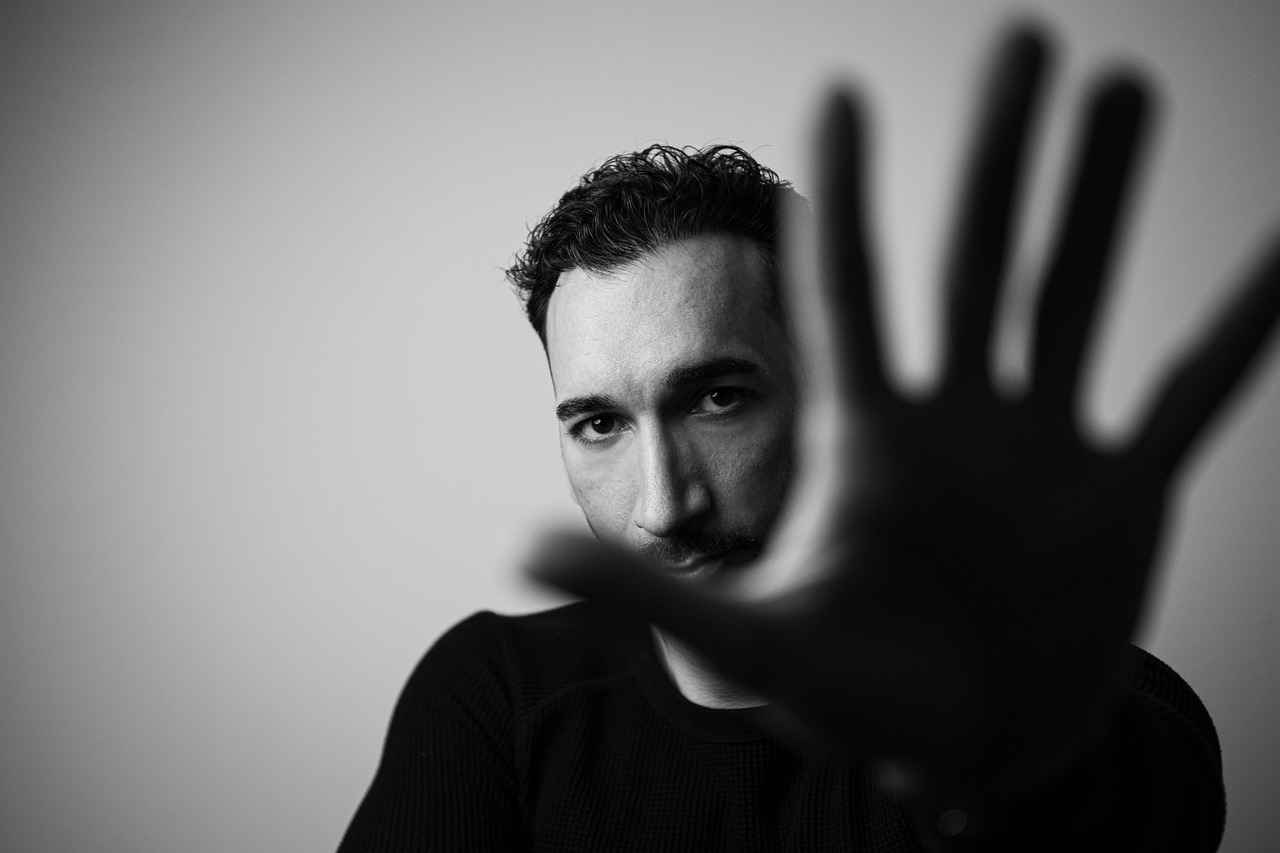
The Influence of Art and Fashion
has always been a pivotal aspect of cultural expression, where the human form serves as a dynamic canvas. In recent years, the inclusion of nude male models has gained significant traction, reflecting not only evolving artistic expressions but also shifting societal norms surrounding masculinity. This article delves into the multifaceted dimensions of this trend, exploring its implications in contemporary art and fashion.
Historically, the portrayal of the human body in art has been a means of exploring themes of beauty, vulnerability, and strength. From the ancient sculptures of Greece, which celebrated the male physique, to modern interpretations in contemporary art, the nude male form has been a subject of fascination and admiration. Artists have long utilized the male body to challenge perceptions and provoke thought, making it a central theme in their work. This tradition continues to influence modern representations, where the male nude is not merely an object of desire but a symbol of deeper emotional and psychological narratives.
- Art as a Reflection of Society: The inclusion of nude male models in art reflects broader societal changes. As discussions around gender and identity evolve, artists are increasingly using the male form to explore themes of masculinity, vulnerability, and emotional depth.
- Breaking Taboos: The portrayal of nude male models challenges longstanding taboos surrounding male nudity. Unlike female nudity, which has often been sexualized, male nudity is beginning to be embraced as a form of artistic expression that highlights the beauty and complexity of the male body.
In the realm of fashion, the evolution of how male models are presented has undergone a significant transformation. Traditionally, the fashion industry has been criticized for its narrow definitions of masculinity, often showcasing idealized and unrealistic body types. However, the rise of body positivity and inclusivity has led to a more diverse representation of male bodies in fashion campaigns and editorials. Nude male models are now featured prominently, challenging conventional norms and celebrating individuality.
The fashion industry is increasingly recognizing the importance of authenticity and relatability in its marketing strategies. Brands are moving away from the hyper-masculine imagery of the past and are instead embracing a more holistic portrayal of masculinity that includes vulnerability and emotional expression. This shift not only resonates with consumers but also reflects a growing acceptance of diverse male identities.
- Campaigns Emphasizing Diversity: Many fashion brands are launching campaigns that feature nude male models of various body types, ages, and ethnicities. This approach not only promotes inclusivity but also encourages men to embrace their bodies, regardless of societal expectations.
- Artistic Collaborations: Collaborations between artists and fashion designers are increasingly common, leading to innovative presentations of the male body. These partnerships often result in unique visual narratives that challenge viewers to reconsider their perceptions of masculinity and beauty.
The impact of this trend extends beyond mere aesthetics; it fosters a deeper dialogue about masculinity and identity. As audiences engage with these representations, they are encouraged to reflect on their own beliefs and biases regarding male bodies. This engagement can lead to a more profound understanding of masculinity that embraces a spectrum of experiences and expressions.
In conclusion, the influence of art and fashion on the portrayal of nude male models is a testament to the evolving landscape of cultural norms and artistic expression. By challenging traditional notions of masculinity and embracing diversity, artists and fashion designers are paving the way for a more inclusive and accepting society. As these conversations continue to unfold, the representation of the male body in art and fashion will undoubtedly continue to evolve, reflecting the complexities of human identity.
Historical Context of Male Nudes in Art
The representation of the male nude in art has a rich and varied history that reflects changing cultural attitudes toward masculinity, aesthetics, and the human form. From the **ancient Greeks**, who celebrated the male body as an ideal of beauty and athleticism, to contemporary artists who explore themes of vulnerability and identity, the male nude has served as a powerful symbol in artistic expression.
In ancient Greece, male nudes were often depicted in sculpture and pottery, showcasing the athletic physique as an embodiment of strength and virtue. The **Kouros** figures, for example, were life-sized statues of young men that represented not only physical beauty but also the ideals of youth and heroism. These sculptures were often used in religious contexts, symbolizing the connection between the divine and the human form. The Greeks believed that the male body was a reflection of the gods, and thus, it was celebrated in public spaces, often as part of athletic competitions.
As we move through the **Renaissance**, the male nude continued to be a focal point of artistic exploration. Artists like **Michelangelo** and **Leonardo da Vinci** pushed the boundaries of anatomical accuracy and emotional expression in their works. Michelangelo’s “David” is a quintessential example, portraying the biblical hero in a moment of contemplation before battle. This sculpture not only highlights the beauty of the male form but also encapsulates the ideals of courage and humanism that characterized the era. The Renaissance marked a shift toward a more nuanced understanding of the male body, one that embraced both physicality and emotional depth.
In the **19th century**, the emergence of photography introduced new possibilities for representing the male nude. Artists like **Eugène Delacroix** and **Gustave Courbet** began to challenge traditional representations, opting instead for raw and unidealized portrayals of the male form. Courbet’s “The Bathers” is particularly notable for its rejection of classical ideals, presenting a more realistic and sometimes uncomfortable depiction of male nudity. This period saw a growing acceptance of the male nude in art, as artists sought to explore themes of sexuality, identity, and the human condition.
Moving into the **20th century**, the male nude became a canvas for exploring complex social issues, including **gender roles** and **sexuality**. The works of artists like **Robert Mapplethorpe** and **David Hockney** pushed boundaries further, often incorporating elements of queer identity and challenging societal norms. Mapplethorpe’s photography, in particular, celebrated the male form while also confronting issues of sexuality and desire. His work sparked conversations about the representation of the male body in art, prompting viewers to reconsider their perceptions of masculinity.
Today, the legacy of male nudes in art continues to evolve. Contemporary artists are increasingly exploring themes of **body positivity** and **diversity**, challenging traditional standards of beauty and masculinity. The rise of social media has further democratized the representation of the male body, allowing artists and models to share their work with a global audience. This shift has led to a broader acceptance of various body types and identities, fostering a more inclusive dialogue around male nudity in art.
In conclusion, the historical context of male nudes in art reveals a dynamic interplay between cultural ideals and artistic expression. As societal norms continue to shift, the representation of the male body remains a vital aspect of artistic exploration, reflecting ongoing conversations about identity, beauty, and the human experience. The celebration of the male nude serves not only as a testament to the enduring legacy of art but also as a mirror reflecting the complexities of masculinity in contemporary society.
Fashion Industry’s Evolution
The fashion industry has undergone a remarkable transformation in recent years, particularly in its approach to representing masculinity. One of the most striking changes is the increasing visibility of nude male models in campaigns and editorials. This trend not only challenges conventional norms but also celebrates individuality and diversity in male representation.
As societal attitudes evolve, the fashion industry is increasingly embracing diversity and inclusivity. This shift has led to a broader acceptance of various forms of masculinity, with brands recognizing that their audience values authenticity and representation. By featuring nude male models, fashion houses are not only breaking away from traditional portrayals of masculinity but also promoting a message of self-acceptance and body positivity.
The traditional image of masculinity often emphasizes strength, stoicism, and a specific body type. However, the rise of nude male modeling is challenging these stereotypes. By showcasing a range of body types and expressions, the industry is redefining what it means to be masculine. This new perspective encourages men to embrace their bodies, regardless of societal expectations, fostering a culture of vulnerability and openness.
High-profile figures in the fashion world, including designers and models, are instrumental in promoting the acceptance of nude male representation. Celebrities who openly discuss body image issues and advocate for body positivity have significant influence over public perception. Their willingness to challenge norms encourages both audiences and brands to rethink their approaches to masculinity and representation.
Nude male models are not just a trend; they represent a form of artistic expression that has been celebrated throughout history. From classical art to modern photography, the male form has been a subject of fascination. By incorporating nude male models into fashion, designers are tapping into this rich artistic tradition while also making a statement about modern masculinity. This artistic approach invites viewers to engage with the work on a deeper level, prompting discussions about beauty, identity, and cultural norms.
Social media platforms have played a pivotal role in the evolution of nude male modeling. These platforms allow models to share their work and stories, creating a community that celebrates body diversity. The democratization of content has empowered male models to showcase their bodies and experiences, fostering acceptance and challenging traditional beauty standards. As more individuals engage with this content, the stigma surrounding nude male representation diminishes, paving the way for broader acceptance in mainstream fashion.
Looking ahead, the fashion industry is poised to continue its evolution towards more inclusive representations of masculinity. As conversations around gender fluidity and non-binary identities gain traction, the inclusion of diverse male bodies in fashion will likely expand. This evolution reflects a growing understanding that beauty is not confined to rigid definitions but is instead a spectrum that encompasses a range of identities and expressions.
In conclusion, the fashion industry’s embrace of nude male models signifies a broader cultural shift towards inclusivity and acceptance. By challenging traditional norms and celebrating diverse representations of masculinity, the industry is not only transforming its landscape but also influencing societal perceptions of body image and identity. As this trend continues to evolve, it holds the potential to reshape the narrative around masculinity for future generations.

The Psychological Impact of Nude Modeling
Nude modeling is more than just a form of artistic expression; it can significantly influence the mental and emotional states of both the models and the audience. Engaging in nude modeling often promotes a sense of acceptance and vulnerability, allowing individuals to confront societal norms about body image and masculinity. This section delves into the multifaceted psychological effects that nude modeling can have, emphasizing the benefits for male models and the audience’s reception.
Benefits for Male Models
Participating in nude modeling can be a transformative experience for male models. One of the primary psychological benefits is the enhancement of self-esteem and body confidence. When models embrace their natural form, it can lead to a profound sense of acceptance, allowing them to appreciate their bodies beyond societal standards. This acceptance fosters a positive self-image, which can have a ripple effect on other areas of their lives.
Moreover, nude modeling encourages vulnerability, which is often seen as a weakness in traditional masculinity. By stepping in front of the camera without clothing, male models are forced to confront their insecurities and societal pressures. This act of vulnerability can lead to personal growth, as models learn to embrace their imperfections and develop a healthier relationship with their bodies.
Additionally, the experience of being photographed or painted in the nude can serve as a powerful form of artistic expression. Male models often report feeling liberated and empowered when they see their bodies represented in a way that challenges conventional beauty norms. This empowerment can translate into greater confidence in their everyday lives, encouraging them to express themselves more freely and authentically.
Audience Reception and Interpretation
The audience’s reception of nude male models is equally significant in understanding the psychological impact of this practice. For many viewers, encountering nude male art can challenge preconceived notions of masculinity and beauty. As societal attitudes shift toward a more inclusive understanding of the male form, audiences may find themselves experiencing a newfound appreciation for diversity in body types.
When audiences engage with nude male models, they are often prompted to reflect on their own perceptions of masculinity. This engagement can foster deeper connections with the art, as viewers begin to see the human body as an expression of individuality rather than a mere object of desire. Such reflections can lead to a broader acceptance of different body types, promoting a culture that values emotional expression and vulnerability.
Furthermore, the presence of nude male models can stimulate discussions about gender roles and societal expectations. Viewers may find themselves questioning why certain body types are celebrated while others are marginalized. This critical engagement with art can encourage audiences to reconsider their own biases and embrace a more inclusive perspective on masculinity.
In conclusion, the psychological impact of nude modeling extends far beyond the act of posing or viewing. It promotes acceptance, vulnerability, and artistic expression for both models and audiences. As society continues to evolve, the dialogue surrounding body positivity and the representation of male bodies in art will likely lead to a greater understanding and appreciation of the diverse expressions of masculinity.
Benefits for Male Models
Participating in nude modeling can be a transformative experience for male models, offering a range of psychological and emotional benefits that extend far beyond the realm of aesthetics. In a society where body image issues are prevalent, many male models find that embracing their vulnerability in front of the camera significantly enhances their self-esteem and body confidence. This journey often leads to profound personal growth and acceptance.
- Enhanced Self-Esteem: Engaging in nude shoots allows male models to confront their insecurities head-on. By stepping into a space where their bodies are on full display, they often learn to appreciate their unique features and embrace their individuality. This process can lead to a stronger sense of self-worth, as they begin to understand that beauty comes in many forms.
- Body Confidence: Nude modeling challenges traditional beauty standards and encourages male models to accept their bodies as they are. This acceptance fosters a healthier body image, which is crucial in an industry that often promotes unrealistic ideals. As models learn to appreciate their bodies, they cultivate a sense of confidence that can positively influence other areas of their lives.
- Emotional Vulnerability: The act of modeling nude requires a level of emotional openness that many find liberating. By allowing themselves to be seen in a vulnerable state, male models often experience a cathartic release of pent-up emotions. This vulnerability can lead to deeper connections with others, both personally and professionally, as they become more attuned to their feelings and the feelings of those around them.
- Artistic Expression: Nude modeling is often viewed as a form of artistic expression, allowing male models to contribute to the creative process in meaningful ways. By participating in shoots, they become part of a larger narrative that celebrates the human form. This involvement can instill a sense of pride and accomplishment, as they recognize their role in challenging societal norms and contributing to the art world.
- Community and Support: The nude modeling community often fosters a sense of camaraderie among its members. Models frequently share their experiences, challenges, and triumphs, creating a supportive environment that encourages personal growth. This network can be invaluable, offering models a safe space to discuss their feelings and experiences related to body image and self-acceptance.
- Personal Growth: The journey through nude modeling can lead to significant personal development. As male models confront their fears and insecurities, they often emerge with a greater understanding of themselves and their bodies. This growth can translate into other aspects of their lives, enhancing their relationships and overall well-being.
In conclusion, the benefits of nude modeling for male models extend far beyond the physical realm. Through this experience, they not only enhance their self-esteem and body confidence but also embark on a journey of emotional vulnerability and personal growth. As society continues to evolve and embrace diverse representations of masculinity, the positive impacts of nude modeling are likely to resonate even more strongly, encouraging more men to celebrate their bodies and express themselves authentically.
Audience Reception and Interpretation
The reception of nude male models is a complex and multifaceted topic that has garnered increasing attention in recent years. As societal norms evolve, the way audiences perceive and interpret the male form in art and fashion is undergoing a significant transformation. This shift not only reflects changing attitudes toward masculinity and beauty but also encourages deeper emotional connections with the artwork itself.
- Changing Perceptions of Masculinity
- Embracing Vulnerability
- Art as a Medium for Connection
Changing Perceptions of Masculinity
Traditionally, masculinity has been associated with strength, stoicism, and a certain idealized physicality. However, the portrayal of nude male models challenges these conventional notions. Many audience members find themselves re-evaluating what it means to be masculine in today’s society. The inclusion of diverse body types and expressions of vulnerability in male nudes allows viewers to see masculinity as a spectrum rather than a rigid set of standards. This broader interpretation resonates with many, leading to a more inclusive understanding of male identity.
Moreover, the representation of male vulnerability through nude modeling prompts audiences to consider their own perceptions of strength and fragility. By showcasing the human body in its most authentic form, these artworks encourage viewers to confront their biases and preconceived notions about masculinity. This engagement can lead to a profound personal reflection, fostering a deeper connection with the art and its subject matter.
Embracing Vulnerability
The act of displaying oneself nude is inherently vulnerable, and this vulnerability can resonate deeply with audiences. When male models present themselves without the barriers of clothing or societal expectations, they invite viewers to engage with their humanity. This openness can evoke a range of emotions, from admiration to empathy, allowing audiences to connect with the models on a personal level.
This emotional engagement is particularly powerful in the context of art. Nude male models often embody a rawness that transcends mere physicality. They become symbols of authenticity, prompting viewers to reflect on their own vulnerabilities and insecurities. In this way, the audience’s reception of nude male models can lead to an enriching dialogue about body image, self-acceptance, and the human experience.
Art as a Medium for Connection
Art has the unique ability to bridge gaps between individuals, fostering connections that transcend cultural and societal boundaries. The inclusion of nude male models in artistic expressions serves as a catalyst for these connections. When audiences encounter these works, they are often compelled to engage with the themes of beauty, vulnerability, and identity that they evoke.
Furthermore, the rising visibility of nude male models in various artistic mediums—such as painting, photography, and sculpture—has opened avenues for discussion about body positivity and acceptance. As viewers confront these representations, they are encouraged to challenge their own biases and embrace a more inclusive perspective on beauty. This shift not only benefits the models themselves but also cultivates a more accepting society.
In conclusion, the audience’s reception of nude male models is a reflection of broader cultural shifts regarding masculinity, vulnerability, and beauty. As viewers engage with these representations, they are invited to explore their own perceptions and emotions, fostering a deeper connection with both the art and the models. This evolving dialogue continues to shape the landscape of art and fashion, paving the way for a more inclusive understanding of the male form.

Breaking Down Gender Stereotypes
Nude male modeling has emerged as a powerful medium for challenging societal norms and redefining gender stereotypes. This evolving landscape plays a crucial role in promoting a more inclusive understanding of masculinity, allowing for the celebration of diverse male identities.
The traditional view of masculinity has often been limited to rigid definitions, emphasizing strength, stoicism, and emotional restraint. However, the rise of nude male modeling is actively disrupting these stereotypes. By showcasing the male form in its most vulnerable state, artists and models are inviting audiences to reconsider what it means to be masculine.
In many cultures, men have been conditioned to suppress their emotions and adhere to a narrow set of characteristics that define masculinity. This cultural backdrop has led to a lack of representation for diverse male identities. Nude male modeling challenges these norms by presenting a broader spectrum of masculinity that includes vulnerability, sensitivity, and emotional expression. This shift is not only beneficial for the models themselves but also for society at large, as it encourages a more holistic view of gender.
One of the most significant impacts of nude male modeling is its ability to foster conversations about body image and acceptance. The visual representation of various male body types—regardless of size, shape, or ethnicity—serves as a powerful reminder that there is no singular way to embody masculinity. This representation is crucial in challenging the unrealistic standards often perpetuated by media and advertising.
Moreover, the presence of nude male models in art and fashion is a direct response to the growing body positivity movement, which advocates for the acceptance of all body types. By embracing their own bodies, male models are not only asserting their individuality but also encouraging others to do the same. This act of self-acceptance can inspire audiences to reflect on their own perceptions of masculinity and beauty.
Additionally, the psychological impact of nude modeling extends beyond the models themselves. Audiences engaging with these representations are often prompted to reevaluate their preconceived notions about masculinity. Many find themselves experiencing a shift in perspective, recognizing that vulnerability can coexist with strength. This duality is essential for breaking down harmful stereotypes that suggest men must always be stoic and emotionally distant.
The inclusion of nude male models in various artistic expressions also highlights the importance of diversity within masculinity. By showcasing different body types, skin tones, and gender expressions, the industry is paving the way for a more inclusive understanding of what it means to be a man. This representation allows individuals to see themselves reflected in art, fostering a sense of belonging and acceptance.
As society continues to evolve, the dialogue surrounding gender norms is becoming increasingly relevant. The visibility of nude male models serves as a catalyst for change, prompting discussions that challenge traditional masculinity. By embracing vulnerability and emotional expression, these models are not only redefining gender stereotypes but also creating a more inclusive environment where all forms of masculinity can thrive.
In conclusion, nude male modeling plays a vital role in breaking down gender stereotypes by promoting a more inclusive understanding of masculinity. Through artistic expression, vulnerability, and the celebration of diverse identities, this trend encourages society to embrace a broader definition of what it means to be a man. As we continue to challenge societal norms, the impact of nude male modeling will undoubtedly resonate, inspiring future generations to redefine masculinity on their own terms.
Redefining Masculinity
The concept of masculinity has undergone significant transformation in recent years, driven by various cultural, social, and artistic movements. One of the most striking developments has been the portrayal of nude male models, which challenges traditional notions of what it means to be masculine. This article delves into how the representation of male nudity in art and media is redefining masculinity, embracing vulnerability, strength, and a broader spectrum of male identities.
Historically, masculinity has been associated with attributes such as stoicism, physical strength, and emotional restraint. However, contemporary society is witnessing a shift that encourages men to embrace their emotional depth and physical diversity. This new perspective is not only empowering but also essential in fostering a healthier understanding of what it means to be a man.
The representation of nude male models plays a pivotal role in this transformation. By showcasing male bodies in their natural state, artists and photographers are breaking down the barriers of traditional masculinity. This exposure allows for a more nuanced understanding of male identity, where vulnerability is not seen as a weakness but rather as a sign of strength and authenticity.
One of the most profound aspects of redefining masculinity through nude modeling is the embrace of vulnerability. In many cultures, men are taught to suppress their emotions and present a tough exterior. However, the portrayal of nude male models invites men to explore their feelings openly and honestly. This shift is crucial in combating harmful stereotypes that suggest emotional expression is incompatible with masculinity.
When male models pose nude, they often reveal not only their physical forms but also their emotional states. This act of vulnerability can resonate deeply with audiences, encouraging them to reflect on their own experiences and feelings. It fosters a sense of connection, as viewers may see parts of themselves reflected in the models’ expressions and postures.
The representation of diverse male bodies in nude modeling is another vital aspect of redefining masculinity. Traditional standards of male beauty often prioritize a narrow range of body types, typically favoring muscularity and a specific aesthetic. However, the inclusion of various body shapes, sizes, and skin tones challenges these norms and celebrates the richness of male diversity.
This broader representation allows men of all backgrounds to see themselves in artistic expressions, promoting self-acceptance and body positivity. When society embraces diverse male identities, it not only enriches the artistic landscape but also cultivates an environment where men feel empowered to express themselves authentically.
The portrayal of nude male models also plays a crucial role in challenging rigid gender norms. By presenting a spectrum of masculinity that includes emotional expression and physical diversity, the art world encourages a reevaluation of what it means to be a man. This shift is particularly important in dismantling the binary view of gender, which often confines individuals to strict roles based on their biological sex.
As more artists and designers showcase nude male models in various contexts, they contribute to a broader dialogue about gender fluidity and non-binary identities. This inclusivity not only benefits men but also fosters a more accepting society where all individuals can express their identities without fear of judgment.
Media and art are powerful tools in shaping societal perceptions of masculinity. The increasing visibility of nude male models in advertising, fashion, and art galleries reflects a changing cultural landscape that values authenticity over convention. Artists and brands that embrace this shift are not only appealing to modern sensibilities but also paving the way for future generations to view masculinity through a more compassionate lens.
In conclusion, the portrayal of nude male models is a significant factor in redefining masculinity. By embracing vulnerability, celebrating diversity, and challenging gender norms, this representation fosters a more nuanced understanding of male identity. As society continues to evolve, the dialogue surrounding masculinity will likely expand, encouraging men to express their true selves without fear or limitation.
The Impact on Gender Norms
The portrayal of nude male models significantly influences societal perceptions of masculinity and gender norms. This shift is not merely about aesthetics; it is a profound cultural movement that challenges long-standing beliefs about what it means to be a man in contemporary society. By showcasing a variety of male bodies in their natural state, the modeling industry is fostering an environment where traditional gender roles are questioned and redefined.
Challenging Traditional Masculinity
Traditionally, masculinity has been associated with traits such as strength, stoicism, and emotional restraint. These rigid definitions often exclude the full spectrum of male experiences, including vulnerability and emotional expression. The rise of nude male modeling is pivotal in challenging these stereotypes. By presenting male bodies of all shapes, sizes, and forms, the industry is promoting a more inclusive understanding of what it means to be masculine.
Moreover, this representation encourages men to embrace their vulnerabilities. When male models express emotions through their poses and facial expressions, it sends a powerful message: that it is acceptable for men to show feelings and that emotional depth is not a sign of weakness. This shift allows for a broader spectrum of masculinity that includes sensitivity and emotional intelligence.
Creating a Culture of Acceptance
As diverse male bodies gain visibility in the fashion and art worlds, society is gradually moving toward a culture of acceptance. This shift is essential in dismantling harmful stereotypes that dictate how men should look and behave. The embrace of body positivity within the nude modeling industry allows men to see themselves represented in ways that were previously unavailable. This representation can lead to improved self-esteem and encourage men to accept their bodies, regardless of societal standards.
Furthermore, the inclusion of various body types—whether athletic, curvy, or somewhere in between—demonstrates that beauty is not confined to a specific mold. This normalization of diverse bodies can inspire men to appreciate their uniqueness, fostering a sense of community and belonging. As more men feel empowered to express themselves authentically, the pressure to conform to traditional masculine ideals diminishes.
Encouraging Dialogue and Reflection
The presence of nude male models also invites important conversations about gender norms and expectations. Audiences are encouraged to reflect on their biases and preconceived notions about masculinity. This can lead to deeper discussions about how societal expectations affect men’s mental health, relationships, and overall well-being.
By engaging with this content, viewers are prompted to question why certain body types are celebrated while others are marginalized. This reflection is crucial in promoting a more equitable understanding of gender, where all expressions of masculinity are valued and respected. Art and fashion become platforms for dialogue, breaking down barriers and fostering understanding.
Influence of Media and Representation
The media plays a significant role in shaping perceptions of masculinity. As more brands and artists choose to feature nude male models, they contribute to a cultural shift that normalizes diverse representations of men. This visibility in mainstream media can have far-reaching effects on public perceptions, encouraging acceptance and understanding among wider audiences.
Social media, in particular, amplifies these messages. Platforms like Instagram and TikTok allow male models to share their journeys and experiences, reaching audiences who may feel isolated or marginalized. This digital engagement fosters a sense of community, where men can connect over shared experiences and support one another in embracing their identities.
The impact of nude male modeling on gender norms is profound. By challenging traditional perceptions of masculinity, promoting acceptance, and encouraging dialogue, the industry is paving the way for a more inclusive and diverse understanding of what it means to be a man in today’s world. As society continues to evolve, so too will the representations of masculinity, allowing for a richer tapestry of male identities to emerge.

The Role of Technology in Nude Modeling
Advancements in technology have significantly transformed the landscape of nude modeling, allowing for enhanced forms of expression and greater accessibility for both models and artists. In this section, we will delve into how digital platforms and emerging technologies are reshaping the nude modeling industry, making it more inclusive and innovative.
The rise of the internet has democratized the art of nude modeling, providing a platform for aspiring models to showcase their work. Websites and social media platforms such as Instagram, OnlyFans, and Patreon have emerged as vital spaces where models can connect directly with their audience. This shift not only increases visibility but also allows for a more diverse representation of male bodies.
- Empowerment through Self-Publishing: Models can now take control of their images and narratives. By using digital platforms, they can present themselves authentically, free from the constraints of traditional modeling agencies.
- Global Reach: The internet allows models to reach audiences beyond their local markets, fostering a global appreciation for diverse body types and artistic expressions.
- Community Building: Online platforms enable models to form communities, share experiences, and support one another, creating a network that encourages body positivity and self-acceptance.
These platforms also facilitate collaboration between artists and models, allowing for innovative projects that may have been difficult to achieve in traditional settings. As a result, the nude modeling industry is witnessing a surge in creative expression and artistic exploration.
Emerging technologies such as virtual reality (VR) and augmented reality (AR) are pushing the boundaries of traditional art and modeling. These technologies offer immersive experiences that can profoundly alter how audiences engage with nude art.
- Immersive Art Experiences: VR allows users to step into a digital space where they can interact with 3D representations of nude models, providing a unique perspective that challenges conventional viewing experiences.
- Augmented Reality Applications: AR technology can overlay digital images onto the real world, enabling artists to create interactive installations that blend physical and digital elements.
- Innovative Storytelling: Both VR and AR offer new narrative possibilities, allowing artists to convey complex themes related to body image, vulnerability, and masculinity in engaging ways.
These technologies not only enhance the artistic experience but also broaden the audience’s understanding of the human form. As more artists and models adopt these tools, we can expect to see a transformation in how nude modeling is perceived and appreciated.
Looking ahead, the role of technology in nude modeling is likely to expand further. As societal norms continue to evolve, technological advancements will play a crucial role in shaping the future of this art form.
- Integration of AI: Artificial intelligence is set to revolutionize how we create and interpret art. AI-generated models and artworks could offer new perspectives on body representation, challenging existing norms.
- Enhanced Personalization: As technology advances, artists will be able to create highly personalized experiences for their audiences, tailoring content to individual preferences and promoting deeper connections.
- Broader Inclusivity: Technology will continue to enable more inclusive representation, allowing models of all body types, genders, and backgrounds to find their place in the nude modeling industry.
In conclusion, the integration of technology into nude modeling is not just a trend; it represents a fundamental shift in how we understand and appreciate the human body. As these advancements continue to unfold, they will likely foster a more inclusive, diverse, and expressive environment for both models and artists alike.
Digital Platforms and Accessibility
Online platforms have revolutionized the landscape of nude modeling, creating a more inclusive and accessible environment for aspiring models and artists alike. In the past, opportunities in this field were often limited to those who had connections within the industry or who could navigate traditional avenues like galleries and agencies. Today, however, the internet has democratized the art of nude modeling, allowing anyone with a camera and an internet connection to share their work and connect with audiences worldwide.
One of the most significant impacts of these digital platforms is the **increased visibility** they provide. Artists and models can now showcase their portfolios on social media sites, personal websites, and specialized platforms dedicated to art and modeling. This visibility not only helps models gain recognition but also fosters a greater acceptance of diverse body types and artistic expressions. As more individuals share their experiences and art, societal norms surrounding nudity and body image are gradually shifting, leading to a more open dialogue about these topics.
Moreover, the **rise of social media** has allowed for the creation of communities that celebrate body positivity and artistic expression. Platforms like Instagram and Twitter enable models to connect with like-minded individuals, share their stories, and promote body acceptance. These communities often emphasize the importance of self-love and confidence, encouraging members to embrace their bodies regardless of societal standards. As a result, many aspiring male models are finding a supportive environment where they can express themselves freely and authentically.
Additionally, the use of **crowdfunding and subscription-based platforms** has opened new avenues for financial support in the nude modeling industry. Websites like Patreon and OnlyFans allow models to monetize their work directly by offering exclusive content to subscribers. This model not only empowers models to take control of their careers but also allows them to build a loyal fan base that appreciates their art. By bypassing traditional gatekeepers, models can create a sustainable income while remaining true to their artistic vision.
The accessibility of digital platforms has also led to a diversification of voices within the nude modeling community. Previously underrepresented groups, including individuals of different ethnicities, body types, and gender identities, now have the opportunity to share their perspectives and experiences. This shift is crucial in challenging the narrow definitions of beauty that have historically dominated the industry. As more models from diverse backgrounds gain visibility, audiences are encouraged to broaden their understanding of beauty and masculinity.
Furthermore, the **advancements in technology** have enhanced the quality and reach of nude modeling. With the rise of high-quality cameras and editing software, models can produce stunning visual content that captures the essence of their art. Online platforms also enable artists to experiment with different styles and techniques, pushing the boundaries of traditional nude modeling. Virtual reality and augmented reality technologies are paving the way for immersive experiences that allow audiences to engage with art in entirely new ways, further expanding the possibilities for creative expression.
In conclusion, the impact of digital platforms on the nude modeling industry cannot be overstated. By providing increased visibility, fostering supportive communities, and enabling financial independence, these platforms have transformed the way aspiring models can navigate their careers. The ongoing evolution of technology and social media will likely continue to shape the future of nude modeling, promoting inclusivity and artistic exploration in ways we have yet to fully comprehend. As more individuals embrace their bodies and share their art, the acceptance of diverse representations of masculinity will only continue to grow.
Virtual Reality and Augmented Experiences
In the realm of art and modeling, emerging technologies such as virtual reality (VR) and augmented reality (AR) are revolutionizing how we perceive and engage with the human form. These technologies are not merely tools; they are transformative mediums that redefine the boundaries of artistic expression and representation. This section delves into how VR and AR are reshaping the landscape of nude male modeling, offering new avenues for creativity and interaction.
One of the most significant impacts of virtual reality is its ability to create immersive environments where viewers can experience art in a three-dimensional space. Unlike traditional forms of art that are confined to physical galleries, VR allows users to step inside a virtual gallery, interact with the artwork, and even experience it from various angles. This level of engagement fosters a deeper connection between the audience and the art, particularly when it comes to nude male models. By experiencing these representations in a virtual space, viewers can challenge their perceptions and biases regarding the male form.
Moreover, augmented reality enhances this experience by overlaying digital images onto the real world. For instance, artists can use AR to project their nude male models into a viewer’s physical environment, creating a blend of reality and imagination. This not only makes art more accessible but also encourages a broader audience to engage with challenging themes around masculinity and body image. The integration of AR into exhibitions can provoke thought and discussion, inviting viewers to reconsider their preconceived notions about the human body.
Another fascinating aspect of these technologies is their ability to democratize art. With the rise of VR and AR platforms, aspiring male models and artists can showcase their work without the constraints of traditional galleries. This democratization allows for a wider variety of representations and narratives, contributing to the ongoing conversation about body positivity and the acceptance of diverse male bodies. Artists can experiment with different styles and concepts, pushing the boundaries of what is considered acceptable or beautiful in the context of male nudity.
In addition, the psychological effects of experiencing nude male models in virtual spaces are noteworthy. For both the audience and the models themselves, engaging with these technologies can promote a sense of vulnerability and acceptance. Models who participate in VR experiences often report a newfound confidence in their bodies, while audiences may find themselves more open to exploring their own perceptions of masculinity and beauty. This can lead to a greater acceptance of diverse body types and a challenge to the traditional ideals that have long dominated the art and fashion industries.
As we look to the future, the potential for VR and AR in the realm of nude male modeling is immense. With advancements in technology, we can expect even more innovative ways to engage with the human form. Artists and models will continue to explore new narratives and representations, paving the way for a more inclusive and diverse understanding of masculinity. The integration of these technologies not only enhances artistic expression but also encourages a cultural shift towards acceptance and celebration of all body types.
In conclusion, the intersection of virtual reality and augmented reality with nude male modeling is a powerful testament to the evolving nature of art and representation. As these technologies continue to develop, they will undoubtedly play a crucial role in shaping the future of how we engage with and understand the human form.
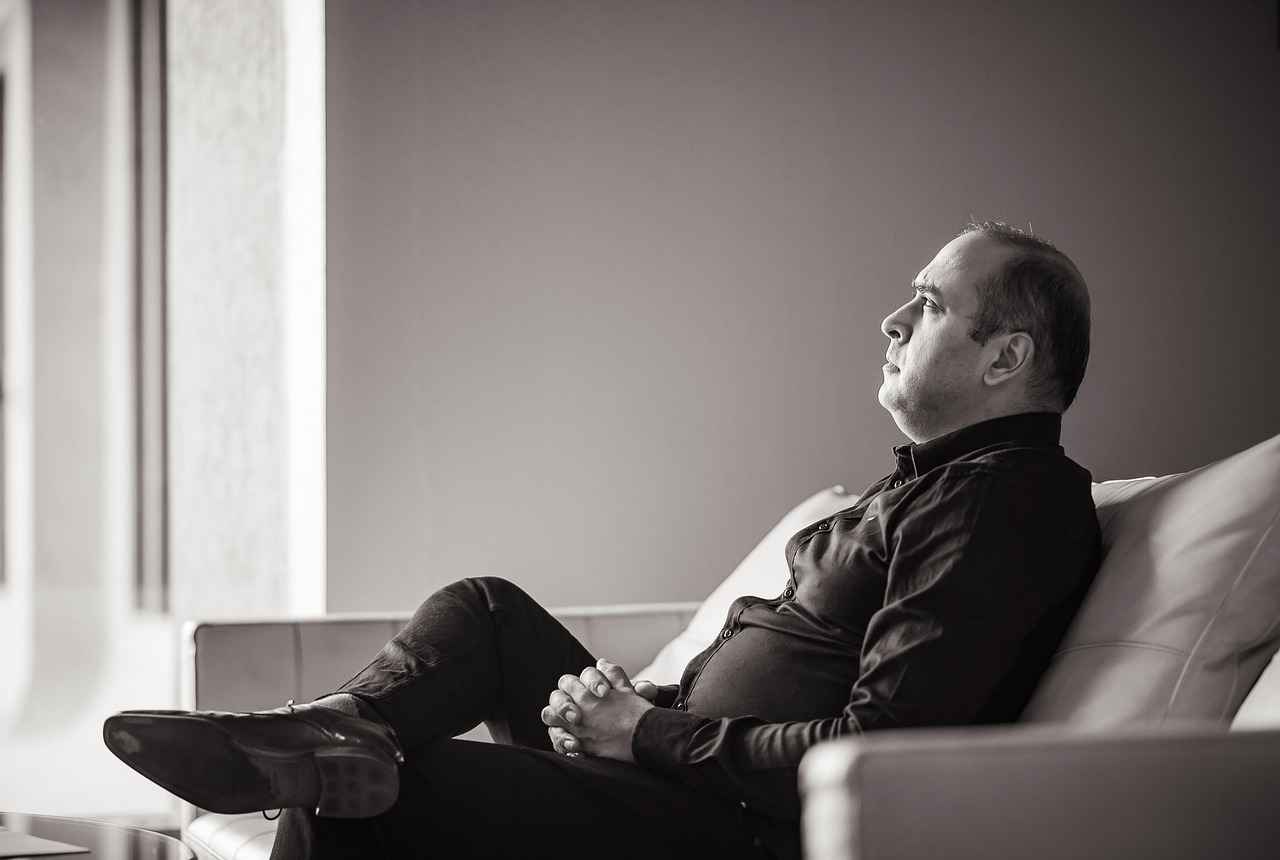
The Future of Nude Male Modeling
is a topic that reflects the dynamic interplay between art, culture, and societal norms. As we navigate through changing perceptions surrounding masculinity and body image, the landscape of nude male modeling is set to evolve significantly. This evolution is influenced by various factors including cultural shifts, advancements in technology, and a growing acceptance of diverse identities.
In recent years, the movement towards body positivity has gained significant momentum. This cultural shift encourages individuals to embrace their bodies in all forms, promoting the idea that beauty is not confined to a specific mold. As a result, the future of nude male modeling looks increasingly promising, with the potential for greater inclusivity and artistic exploration. The modeling industry is beginning to reflect this change, moving away from traditional representations of male bodies and embracing a wider array of shapes, sizes, and identities.
The influence of social media cannot be understated in this context. Platforms like Instagram and TikTok have become powerful tools for male models to showcase their work and connect with audiences. This increased visibility allows for a broader range of male representations, helping to dismantle outdated stereotypes and encourage self-acceptance. As more men share their experiences and vulnerabilities, the stigma surrounding nude male modeling diminishes, paving the way for future generations to express themselves freely.
Moreover, the art world has always played a pivotal role in shaping societal perceptions of the human form. The inclusion of nude male models in contemporary art reflects changing artistic expressions and a redefinition of masculinity. Artists are increasingly exploring themes of vulnerability, strength, and diversity through their work, challenging conventional notions of male beauty. This artistic exploration not only enriches the creative landscape but also fosters a deeper understanding of the complexities of male identity.
As we look ahead, emerging trends such as gender fluidity and non-binary identities are likely to influence the future of nude male modeling. The industry is becoming more attuned to the nuances of gender, recognizing that masculinity is not a monolithic concept. This shift encourages a broader representation of male bodies, allowing for a richer tapestry of identities to be celebrated in both art and fashion.
Furthermore, advancements in technology are revolutionizing the nude modeling landscape. Digital platforms have democratized the art of modeling, enabling aspiring models to showcase their work and connect with a global audience. This increased accessibility not only enhances visibility but also fosters a culture of acceptance and diversity. Emerging technologies like virtual reality and augmented reality are creating immersive experiences that challenge traditional boundaries of art and modeling, offering innovative ways to engage with the human form.
In conclusion, the future of nude male modeling is poised for transformation. As societal norms continue to evolve, there is a growing potential for inclusivity, artistic exploration, and a redefinition of masculinity. The ongoing dialogue surrounding body positivity and gender representation will likely lead to increased acceptance of diverse male bodies in various artistic and commercial contexts. This promising trajectory invites a celebration of individuality, vulnerability, and strength in the male form, paving the way for a more inclusive and representative modeling industry.
Emerging Trends and Influences
The representation of the male body in art and fashion is undergoing a profound transformation, driven by a myriad of factors that reflect contemporary societal values. One of the most significant shifts is the increasing visibility of gender fluidity and non-binary identities, which are challenging traditional notions of masculinity and beauty. As these trends gain traction, they are poised to reshape the landscape of nude male modeling, expanding the definitions of what is deemed beautiful and acceptable.
Gender Fluidity and Non-Binary Identities
Gender fluidity refers to a flexible range of gender identities that may change over time or depending on the context. This concept has gained popularity, particularly among younger generations who reject the rigid binary classifications of male and female. Non-binary identities, which encompass a spectrum of gender expressions that do not conform strictly to traditional male or female roles, are also becoming more recognized and accepted. This evolving understanding of gender is influencing various sectors, including fashion and art, where the representation of the human form is increasingly inclusive.
In the context of nude male modeling, these trends invite a broader interpretation of beauty that transcends conventional standards. Models who identify as gender fluid or non-binary challenge the stereotypical portrayals of masculinity, allowing for a more diverse range of bodies and expressions to be celebrated. This shift not only promotes inclusivity but also encourages individuals to embrace their authentic selves, fostering a culture of acceptance and self-love.
Artistic Expression and Cultural Reflection
The art world has always been a mirror to society, reflecting its values, struggles, and evolutions. The rise of gender fluidity and non-binary identities is prompting artists to explore new themes and narratives in their work. Nude male modeling is no longer confined to traditional representations; it now encompasses a variety of body types, gender expressions, and emotional states. This evolution is evident in contemporary art exhibitions, where artists are challenging societal norms and inviting audiences to engage with the complexities of identity.
Moreover, the portrayal of the male form in art is evolving to include more than just physical aesthetics. Artists are increasingly focusing on the emotional and psychological aspects of their subjects, exploring themes of vulnerability, strength, and individuality. This deeper engagement with the male body allows for a richer dialogue about masculinity and the human experience, encouraging viewers to rethink their perceptions.
Fashion Industry’s Response
The fashion industry is also responding to these emerging trends by incorporating gender-fluid and non-binary models into their campaigns. High-profile brands are beginning to recognize the importance of representation and inclusivity, showcasing a diverse range of bodies that reflect the realities of contemporary society. This shift is not merely a trend; it represents a fundamental change in how fashion perceives and presents masculinity.
Fashion designers are increasingly experimenting with styles and silhouettes that defy traditional gender norms, creating collections that appeal to a broader audience. The inclusion of nude male models who embody gender fluidity and non-binary identities in runway shows and advertising campaigns is a powerful statement that challenges the status quo. It sends a clear message that beauty is not limited to one specific form but is a diverse and multifaceted concept.
Impact on Audience Perception
The representation of gender fluid and non-binary identities in nude male modeling is having a significant impact on audience perceptions. As viewers are exposed to a wider variety of representations, they are more likely to question their preconceived notions of masculinity and beauty. This exposure can lead to greater acceptance and understanding of diverse identities, fostering a culture where emotional expression and individuality are celebrated.
Furthermore, the dialogue surrounding these emerging trends encourages individuals to reflect on their own identities and experiences. It promotes a sense of community and belonging, as people from all walks of life see themselves represented in the art and fashion they consume. This shift not only empowers individuals but also enriches the cultural landscape, creating a more inclusive environment for all.
As we move forward, the influence of gender fluidity and non-binary identities on nude male modeling is expected to grow, leading to even greater inclusivity and artistic exploration. The future holds exciting possibilities for the representation of the male body, as we continue to embrace the beauty of diversity in all its forms.
Continued Acceptance and Representation
The ongoing dialogue surrounding body positivity and gender representation is reshaping societal norms, leading to a more inclusive acceptance of diverse male bodies in artistic and commercial contexts. This shift is not merely a trend but a significant cultural evolution that reflects broader changes in how we perceive masculinity and body image.
- Understanding Body Diversity: The traditional ideals of masculinity often emphasized a narrow range of body types, typically favoring muscular and toned physiques. However, the body positivity movement champions the idea that all body types are valid and worthy of representation. This includes embracing different shapes, sizes, and features that were previously marginalized.
- Artistic Expression: In the world of art, the inclusion of diverse male bodies challenges the conventional representations that have dominated for centuries. Artists are increasingly depicting men of all body types, showcasing the beauty in vulnerability and authenticity. This artistic shift encourages audiences to appreciate the male form in all its diversity.
- Commercial Impact: Brands are recognizing the importance of inclusivity in their marketing strategies. By featuring male models of varying body types in campaigns, companies not only reflect societal changes but also resonate more deeply with consumers. This approach fosters brand loyalty and encourages a broader acceptance of different male bodies.
The rise of social media has played a pivotal role in this transformation. Platforms such as Instagram and TikTok provide a space for male models to share their experiences and body positivity messages directly with their audiences. This grassroots movement allows for authentic connections, as individuals are encouraged to embrace their bodies and share their journeys toward self-acceptance.
Social media influencers, particularly those who identify as male, are breaking down the barriers of traditional masculinity by showcasing their bodies unapologetically. This visibility not only empowers other men to embrace their bodies but also challenges societal norms that dictate how men should look and behave. The more diverse representations we see in our feeds, the more normalized they become, leading to a collective shift in perception.
Moreover, the influence of the fashion industry cannot be understated. Designers and brands are increasingly casting models that represent a wider array of body types, moving away from the unrealistic standards that have long dominated the industry. This shift is not just about aesthetics; it’s about fostering a culture of acceptance and understanding that every body is unique and deserving of celebration.
As we continue to navigate the complexities of gender representation, it is essential to recognize the impact of this dialogue on future generations. Young boys growing up in a world where diverse male bodies are represented in media and art will likely develop a healthier relationship with their own bodies. They will be less inclined to conform to rigid standards of masculinity that have historically dictated their self-worth.
In conclusion, the ongoing discussions surrounding body positivity and gender representation are paving the way for a more inclusive understanding of masculinity. As society becomes more accepting of diverse male bodies, we can expect to see continued growth in artistic and commercial representations that celebrate individuality and authenticity. This evolving landscape not only enriches our cultural fabric but also promotes a healthier, more accepting environment for everyone.
Frequently Asked Questions
- Why is there a rise in the popularity of nude male models?
The increasing acceptance of body positivity and diverse representations of masculinity has led to a surge in the visibility of nude male models. Cultural shifts are challenging traditional beauty standards, encouraging more men to embrace their bodies and express themselves artistically.
- How does social media influence perceptions of nude male modeling?
Social media platforms amplify body positivity messages, allowing male models to share their experiences and connect with wider audiences. This visibility helps foster acceptance and encourages discussions around masculinity and body image.
- What psychological benefits do male models gain from nude modeling?
Participating in nude shoots can significantly enhance self-esteem and body confidence for male models. Embracing vulnerability in front of the camera often leads to personal growth, acceptance, and a deeper understanding of their own identities.
- How does nude modeling challenge traditional gender stereotypes?
Nude male modeling plays a crucial role in redefining masculinity by presenting a more nuanced view that embraces vulnerability and diversity. It encourages society to reexamine rigid gender norms and promotes a culture where emotional expression is celebrated.
- What role does technology play in the evolution of nude modeling?
Advancements in technology, such as digital platforms and virtual reality, have transformed the nude modeling landscape. They provide new avenues for artistic expression and accessibility, allowing aspiring models to showcase their work and connect with audiences more easily.
- What does the future hold for nude male modeling?
The future looks bright for nude male modeling, with emerging trends in body representation and gender fluidity likely to broaden the scope of what is considered beautiful. Continued discussions around body positivity and representation will further enhance inclusivity in this field.











